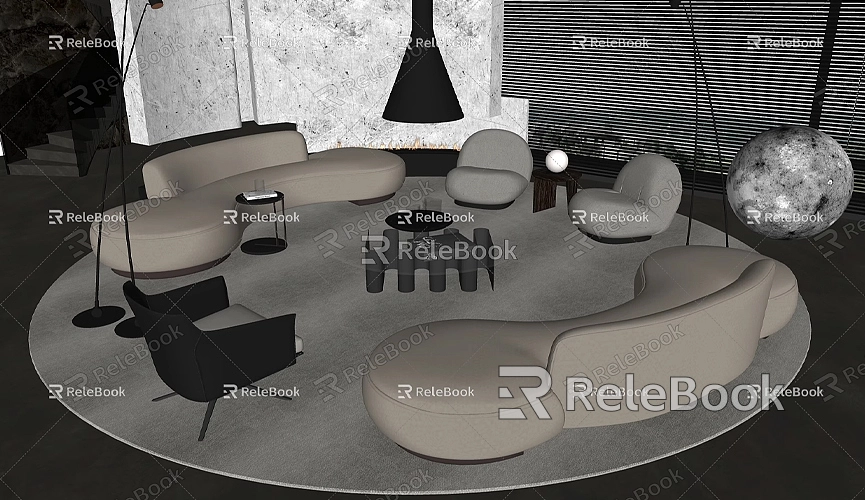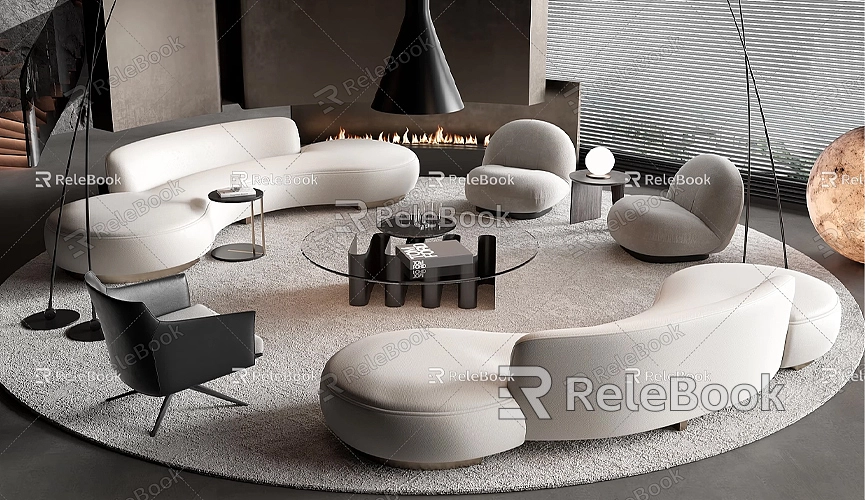How to Copy a SketchUp Model
Copying models is a common and practical operation when working with SketchUp. Whether you need to duplicate a small object, repeat architectural elements multiple times, or back up an entire scene, mastering how to efficiently copy SketchUp models can greatly enhance your workflow. This article will explain how to copy models in SketchUp and share some useful tips and precautions to help you handle various copying needs with ease.
Why Copy SketchUp Models
In 3D modeling, there are many scenarios where copying features are essential. For example, when designing an office, you may need to duplicate multiple identical chairs and desks. In architectural design, you might need to repeat the same windows and doors throughout the model. Using the copy function not only saves time but also ensures consistency across your design.

Additionally, copying models can be useful for backup and version control. When you complete an important design stage, you can make a copy of the entire model to back it up, ensuring you don’t lose earlier design versions during future modifications. Whatever your needs may be, knowing how to copy SketchUp models is a must-have skill for any designer.
Basic Copy Operations in SketchUp
There are several ways to copy models in SketchUp. Depending on your needs, choosing the right method can help you complete tasks more efficiently.
Using the Move Tool to Copy
The most common method to copy in SketchUp is through the "Move" tool. Here’s how:
1. Select the Object to Copy: Use the "Select" tool to highlight the object you want to duplicate.
2. Activate the Move Tool: Click on the "Move" tool in the toolbar or press the shortcut key "M."
3. Press and Hold the "Ctrl" Key to Copy: Once the "Move" tool is active, hold down the "Ctrl" key (or "Option" key on Mac). You will see a “+” symbol next to the cursor, indicating that you are about to copy the object.
4. Drag to the Target Position: Hold down the left mouse button and drag the copied object to the desired location.
This method is suitable for most situations—it's quick, simple, and allows precise control over the position of the copy.
Using the Rotate Tool for Array Copy
If you need to copy a model multiple times at a certain angle, such as placing columns around a circular arrangement, you can use the "Rotate" tool.
1. Select the Object and Activate the Rotate Tool: First, select the model you want to copy, then click the "Rotate" tool in the toolbar (shortcut key "Q").
2. Press the "Ctrl" Key (or "Option" Key) to Start Copying: After choosing the center of rotation, press and hold the "Ctrl" key to enter copy mode.
3. Set the Rotation Angle and Enter the Number of Copies: Drag to set the position of the first copy, then type the number of copies you want, such as “6,” to create 6 duplicates.
This method is ideal for creating circular arrangements of objects, such as gears, columns, lights, etc.

Copying Groups and Components
In SketchUp, models can be organized as Groups and Components. If the object you want to copy is complex and will be reused frequently in the future, it’s advisable to create it as a "Group" or "Component" for easier copying and management.
Differences Between Groups and Components
Groups and Components help organize models, but there are important differences:
- Group: When you copy a Group, each copy is independent. Modifying one will not affect the others.
- Component: When you copy a Component, modifying one copy will update all other instances. This is useful for objects that need to be consistently modified, such as windows, furniture, etc.
Choosing the appropriate method can greatly improve efficiency, especially when dealing with complex models. Using Components can save you a lot of time and effort.
Copying Groups and Components
Whether it’s a Group or Component, the copy operation is the same as for regular objects. Just select the object, hold down the "Ctrl" key, and use the "Move" or "Rotate" tool. It’s a good idea to create frequently used design elements as Components, such as doors, windows, and furniture, so they can be reused across different projects, enhancing productivity.
Useful Tips for Efficient Copying
After mastering the basic copy methods, here are some useful tips to make copying even more efficient:
Multiple Equidistant Copies
If you need to copy an object to multiple positions at fixed intervals, you can use the "Move" tool’s multiple equidistant copy function. After creating the first copy, type "/" followed by the number of copies in the distance input box, e.g., "/5," and the system will automatically duplicate 5 objects between the two points.
Mirror Copying
When creating symmetrical objects, you can use the "Scale" tool for mirroring. Select the object, press and hold the "Ctrl" key, and use the "Scale" tool to flip the object, creating a mirror effect—ideal for designing symmetrical items.
Common Issues and Solutions
When copying SketchUp models, you may encounter some issues, such as the copied models not aligning on the same plane or having offsets between multiple objects. Here are some solutions:
- Use the Align Tool: Make sure copied objects are on the same plane. You can use the “Align” tool in SketchUp or utilize the axes to precisely place the copies.
- Check Materials and Textures: Sometimes, materials and textures don’t automatically follow the copied object. To ensure a consistent look, you may need to manually adjust the materials or reapply them after copying.
Precautions When Copying Models
While copying models can greatly boost efficiency, it’s essential to be mindful of potential issues. Copying too many complex models may slow down SketchUp’s performance or even cause crashes. Therefore, make sure your computer has adequate specifications, or simplify the models when necessary. Additionally, when duplicating many identical elements, use Components instead of independent objects for easier management and editing.
Copying models in SketchUp is a fundamental yet crucial skill. By mastering various copying methods and tips, you can significantly improve your modeling efficiency. Whether it’s simply duplicating an object or executing complex multiple array copies, understanding how to properly operate, set up, and optimize models will make your design work smoother and more productive.
If you need high-quality 3D textures and HDRIs for creating models and virtual scenes, you can download them for free from [Relebook](https://textures.relebook.com). If you need beautiful 3D models, visit [Relebook](https://3dmodels.relebook.com), where Relebook provides a wide range of premium 3D resources. Hopefully, this article has helped you understand how to copy models in SketchUp more efficiently and achieve better results in your designs.

